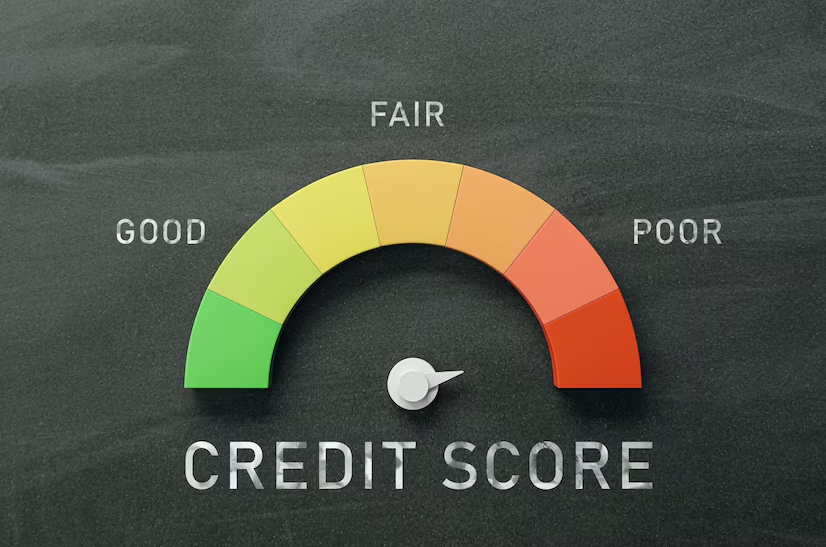Obtaining a mortgage with a low credit score can be challenging, but it’s not impossible. In 2024, various mortgage programs are designed to help individuals with less-than-perfect credit secure home loans. This comprehensive guide explores the best mortgage programs available for those with low credit scores, including their eligibility requirements, benefits, and application processes.
Best mortgage programs available for those with low credit scores
1. FHA Loans
Overview
The Federal Housing Administration (FHA) insures loans made by approved lenders to borrowers with low to moderate credit scores. FHA loans are popular among first-time homebuyers and those with less-than-perfect credit.
Key Features
- Down Payment: As low as 3.5% of the purchase price.
- Credit Score Requirement: Minimum credit score of 580 for a 3.5% down payment; 500 to 579 may qualify with a 10% down payment.
- Mortgage Insurance: Requires both an upfront mortgage insurance premium (UFMIP) and monthly mortgage insurance premiums (MIP).
Benefits
- Flexible Credit Requirements: Lower credit score thresholds compared to conventional loans.
- Lower Down Payments: Makes homeownership more accessible.
- Assumable Loans: Future buyers can assume the mortgage, which can be beneficial if interest rates rise.
Application Process
- Pre-Approval: Obtain pre-approval from an FHA-approved lender.
- Documentation: Provide financial documents, including income verification and credit history.
- Appraisal: Schedule an FHA appraisal to determine the home’s value and condition.
2. VA Loans
Overview
The U.S. Department of Veterans Affairs (VA) offers loans to veterans, active-duty service members, and certain members of the National Guard and Reserves. VA loans are known for their favorable terms and are available to those with low credit scores.
Key Features
- Down Payment: No down payment required for eligible borrowers.
- Credit Score Requirement: No official minimum credit score requirement, but most lenders prefer a score of at least 620.
- Mortgage Insurance: No mortgage insurance required.
Benefits
- No Down Payment: Reduces the upfront cost of purchasing a home.
- Competitive Interest Rates: Often lower than conventional loan rates.
- No Mortgage Insurance: Saves on monthly costs.
Application Process
- Obtain a Certificate of Eligibility (COE): Prove your eligibility through the VA.
- Pre-Approval: Get pre-approved by a VA-approved lender.
- Submit Documents: Provide necessary financial and military documentation.
- Appraisal: The VA will conduct a property appraisal to ensure it meets their standards.
3. USDA Loans
Overview
The U.S. Department of Agriculture (USDA) offers loans to eligible rural and suburban homebuyers with low to moderate incomes. USDA loans are designed to promote homeownership in rural areas.
Key Features
- Down Payment: No down payment required.
- Credit Score Requirement: Generally, a minimum credit score of 640 is preferred.
- Income Limits: Must meet income eligibility requirements based on location and household size.
Benefits
- No Down Payment: Reduces the upfront cost of buying a home.
- Low Interest Rates: Competitive rates compared to conventional loans.
- Flexible Credit Requirements: More lenient credit requirements.
Application Process
- Pre-Qualification: Check eligibility with the USDA or an approved lender.
- Application: Submit a loan application with income, credit, and property information.
- Appraisal: The USDA will conduct a property appraisal to ensure it meets program requirements.
4. Subprime Mortgages
Overview
Subprime mortgages are offered to borrowers with low credit scores or poor credit histories. These loans come with higher interest rates to compensate for the increased risk.
Key Features
- Down Payment: Typically higher than other loan types.
- Credit Score Requirement: Lower credit score thresholds compared to prime loans.
- Interest Rates: Higher interest rates due to increased risk.
Benefits
- Accessibility: Available to borrowers who may not qualify for conventional or government-backed loans.
- Flexible Terms: Lenders may offer flexible repayment terms.
Application Process
- Find a Lender: Look for lenders specializing in subprime mortgages.
- Pre-Approval: Obtain pre-approval and discuss loan terms.
- Documentation: Provide necessary financial documentation.
- Appraisal: An appraisal will be required to assess the property’s value.
5. Conventional Loans with Low Credit Options
Overview
Some conventional lenders offer specialized programs for borrowers with low credit scores. These programs typically require higher credit scores and down payments compared to government-backed loans.
Key Features
- Down Payment: Can vary; often higher than government-backed loans.
- Credit Score Requirement: Minimum credit score requirements can be higher, around 620-640.
- Mortgage Insurance: May be required if the down payment is less than 20%.
Benefits
- Potentially Lower Rates: Some lenders may offer competitive rates for low credit borrowers.
- Variety of Options: Flexible terms and conditions depending on the lender.
Application Process
- Pre-Approval: Obtain pre-approval from a lender offering specialized programs.
- Submit Documents: Provide financial and credit documentation.
- Appraisal: A property appraisal will be required.
Tips for Securing a Mortgage with Low Credit
- Improve Your Credit Score: Take steps to improve your credit score before applying, such as paying off debts and correcting any errors on your credit report.
- Save for a Larger Down Payment: A larger down payment can offset the risk for lenders and may improve your chances of approval.
- Consider a Co-Signer: Having a co-signer with a higher credit score can increase your chances of approval and secure better terms.
- Shop Around: Compare offers from multiple lenders to find the best rate and terms for your situation.
- Get Professional Advice: Consult with a mortgage advisor or financial planner to explore your options and find the best program for your needs.
Frequently Asked Questions
1. Can I get a mortgage with a credit score below 580?
Yes, some government-backed loans, such as FHA loans, are available to borrowers with credit scores below 580, though the terms may vary.
2. What is the minimum credit score required for a VA loan?
While the VA does not set a minimum credit score requirement, most lenders prefer a score of at least 620 for VA loans.
3. Are USDA loans available for homes in urban areas?
USDA loans are generally available for homes in rural and suburban areas, not urban areas.
4. How can I improve my credit score before applying for a mortgage?
You can improve your credit score by paying off outstanding debts, making timely payments, and checking your credit report for errors.
5. What are subprime mortgages, and are they a good option?
Subprime mortgages are offered to borrowers with low credit scores and come with higher interest rates. They can be a viable option for those who don’t qualify for other types of loans but come with higher costs.
Conclusion
Securing a mortgage with a low credit score in 2024 requires careful consideration of available options and understanding the specific requirements and benefits of each program. FHA, VA, and USDA loans offer favorable terms for eligible borrowers, while subprime mortgages provide access for those with more challenging credit histories. By comparing programs, improving your credit, and seeking professional advice, you can find the best mortgage solution to meet your needs and achieve homeownership.


















